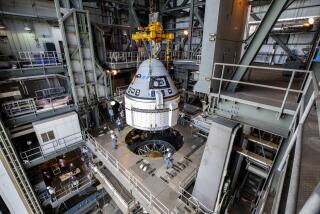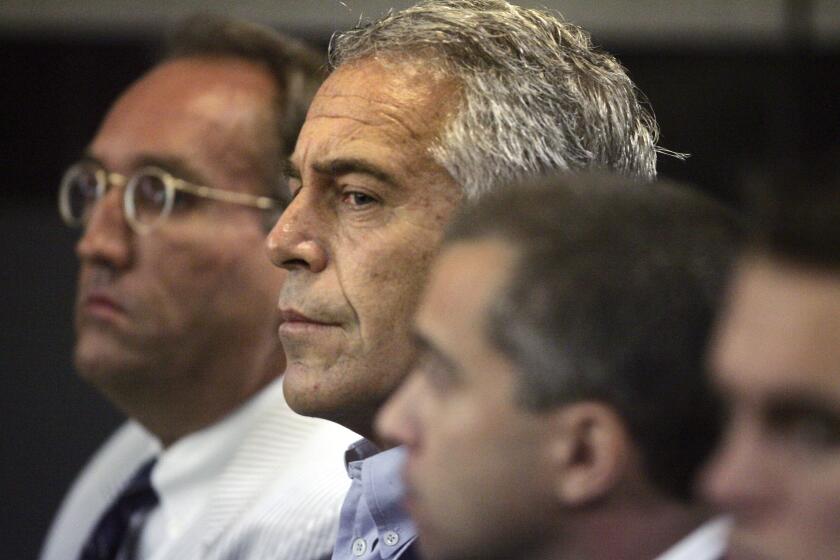Shuttle Leak Threatens Mir Rendezvous : Space: More fuel spouts from first thruster, while a second faulty unit is shut down. Russians now fear damage to their space station.
- Share via
KENNEDY SPACE CENTER, Fla. — Spouting fuel like a geyser, a leaking thruster on the space shuttle Discovery threatened Saturday to ruin the shuttle’s rendezvous with the Russian space station.
Discovery later sprang another, bigger thruster leak, but the crew got that seepage to stop by cutting off its fuel late Saturday.
Russian officials were concerned that the leaking fuel might damage their orbiting Mir station if Discovery came too close during Monday’s scheduled rendezvous. NASA flight controllers scrambled to provide as much information about the leak as possible to their Russian counterparts.
Mission operations director Randy Stone said NASA will do whatever the Russians want. In the worst case, the Discovery and its crew of six will have to fly around Mir from about 400 feet away, he said. The plan has been for the shuttle approaching as close as 35 feet as practice for the first shuttle-Mir docking in June.
Shuttle commander James Wetherbee said that he would be disappointed if he couldn’t close in all the way, and that much information would be lost involving navigation and shuttle-handling.
National Aeronautics and Space Administration officials insist that the June docking by Atlantis will proceed no matter what happens on this mission. At least seven shuttle-Mir dockings are planned through 1997. Discovery’s flight is the dress rehearsal.
The first steering thruster to leak, located at the rear of Discovery, began spewing nitrogen tetroxide shortly after the shuttle reached orbit Friday. The amount of leakage has decreased from two pounds to a half-pound per hour, but Russian space officials are worried that even that much could contaminate the station.
The second leak popped up Saturday afternoon in a thruster at the front of Discovery.
The leak poses no safety hazard to the shuttle or crew and does not affect flight duration.
For the crew at least, it was business as usual Saturday. The five Americans and one Russian hoisted an ultraviolet telescope on the end of Discovery’s robot arm to observe engine exhaust and the glow created when the shuttle collides with atomic oxygen.
More to Read
Sign up for Essential California
The most important California stories and recommendations in your inbox every morning.
You may occasionally receive promotional content from the Los Angeles Times.













